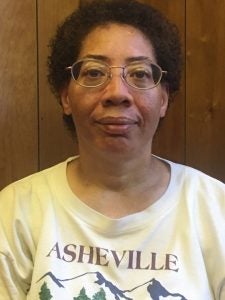Bessie Coleman — daredevil ‘Brave Bess’
Published 9:31 am Wednesday, June 20, 2018
Flying high in the sky as if you could touch the clouds. Maybe that’s what Bessie Coleman, the world’s first licensed African-American pilot felt. On Jan. 26, 1892, Bessie Coleman was born in Atlanta, Texas to Sue and George Coleman. She grew up in Waxahachie, Texas with her siblings working in the cotton fields and helping with the washing and ironing her mother took in to help support the family. Coleman had a love for reading and was good in math. Many times while attending school, she had to miss it because of working in the cotton fields or caring for her younger siblings. Whether in or out of school, she was determined to get a good education.
After Coleman graduated from the all black high school in Waxahachie, she enrolled at the Colored Agricultural and Normal University (now Langston University) in Langston, Oklahoma. She had saved up money from working as a laundress to attend. Unfortunately, because of financial difficulties, Coleman had to quit after one semester. Subsequently, she moved to Chicago where her brother lived and attended beauty school for a while. She worked as a manicurist at the White Sox Barber Shop.
Planes had always fascinated Coleman and she had a desire to learn to fly them. Moreover, she became acquainted with Robert Arnold, editor of the Weekly Defender newspaper and expressed to him her desire to fly and that no flight school in America accepted women, especially black women. He suggested she travel to France to pursue her dream. In December 1920, Coleman enrolled in Ecole d’Aviation des Fre res Caudron at Le Crotoy, a small town near the English Channel. She learned everything from banked turns, looking the loop and aircraft maintenance. By June 1921 at age 29, she had earned the distinction of being the first black person in the world to become a licensed pilot from the Federation Aeronautique Internationale.
Returning to the United States that same year her goal in addition to having a flying career was to open a flight school for black students. In 1922, Coleman made a second trip to France for lessons in dangerous difficult air maneuvers for stunts and aerobatics. With that knowledge, she became a barnstormer. A barnstormer goes across the country renting cow pastures where they put on airshows. Calling themselves gypsies, they flew low, zooming high above barns, sometimes flying through them. Now you know where the name “Brave Bess” comes from.
Furthermore, Coleman’s first American air show was on Sept. 3, 1922 at Curtiss Field near Manhattan. That success took her all across the country with many shows in her native South. In 1925, her flight headquarters were in Houston, Texas with June 19 being her first performance in the state. Coleman mainly flew Curtiss JN-4D planes and surplus army planes used in World War I.
In addition to her stunt flights, she gave lectures to schools and churches, encouraging young black women and men to enter aviation. In one instance, she refused to give an exhibition to Waxahachie on school grounds unless blacks were allowed to use the same entrance as whites. The request was granted, although once inside, blacks had to sit separately from whites. Unfortunately, in 1924, Coleman had her first major accident while barnstorming in California. She took a year off for recovery. By 1926, she had become one of America’s most popular stunt flyers.
Tragically, on April 30, 1926, Coleman was practicing in an air show in Jacksonville, Florida, sponsored by the Negro Welfare League when while doing a test flight fell to her death; the plane did not pull up out of a nosedive as planned and instead somersaulted, dropping Coleman, her mechanic and publicity agent William Willis from the plane. The crash was believed to have been caused by a loose wrench jamming the plane’s controls. Funeral services for Coleman were held in Jacksonville with hundreds in attendance. Coleman was returned to Chicago and is buried in Lincoln Cemetery. Even though she did not get to open her school for blacks, numerous Coleman aero groups were established. On Labor Day in 1931, these clubs sponsored the first all black air show in America, attracting 15,000 spectators. Coleman’s numerous accomplishments have been recognized over the years, including in Indiana, the Bessie Coleman Aviation Club was organized by black female students in 1977 and in 1990 a street in Chicago was renamed Bessie Coleman Drive.
So you see Coleman took flight in more ways than one, soaring higher than anyone could have expected. Although like so many, she had to go to Europe to make her dream a reality, she did it with a daredevil spirit and a steadfast determined heart. We can all take wings and fly over the horizon to our destiny.
Judy Moore is a tour guide at The Central High Museum and lives in Wylliesburg. She can be reached at ju.mo39@live.com.


